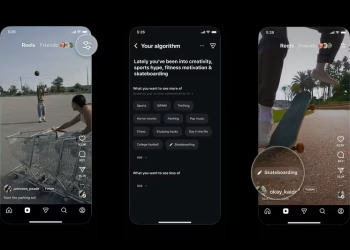A new neuroscience study has revealed that addiction to short-form video platforms such as TikTok, Instagram Reels, and YouTube Shorts may significantly alter brain function—particularly in areas linked to decision-making and risk assessment.
Published in the journal NeuroImage, the research shows that individuals addicted to these platforms tend to exhibit reduced sensitivity to financial losses and a tendency to make quicker, more impulsive decisions. These behavioral changes are associated with distinct neural activity patterns, especially in brain regions involved in reward processing.
According to the authors, behaviors related to addiction—whether substance abuse or gambling—commonly lead to a diminished ability to weigh potential costs against rewards. In a similar fashion, short-form video addiction seems to promote a preference for immediate gratification over long-term outcomes.
The lead author, Dr. Qiang Wang, a psychology professor at Tianjin University, described short-form video addiction as a “global threat to public health.” In China alone, users spend an average of 151 minutes daily on these platforms, with a staggering 95.5% of internet users affected. Wang noted that such heavy use can impair focus, sleep quality, and mental health, and may even raise the risk of depression.
To better understand how this type of behavioral addiction affects brain-based risk assessment, the researchers combined computational modeling (drift diffusion models) with functional MRI scans. They recruited 36 university students aged 18 to 24, who first completed a standardized questionnaire measuring symptoms of short-form video addiction—such as intense urges to consume content, difficulty limiting usage, and negative personal consequences.
During fMRI scanning, participants took part in a gambling-style task designed to test their sensitivity to losses versus gains. The results showed that those with stronger symptoms of addiction had lower loss aversion and gathered evidence more quickly, suggesting a tendency toward rash, less deliberative choices. These patterns held true even when accounting for age, gender, and socioeconomic background.
Interestingly, these individuals exhibited reduced activation in the precuneus—a region tied to self-reflection, cognitive control, and value-based assessment—when evaluating potential rewards. Conversely, they showed increased activity in the cerebellum and postcentral gyrus (areas related to motor control and sensory processing) when anticipating losses.
The findings contribute to a growing body of research highlighting the cognitive and neurological impacts of excessive engagement with short-form video content. While the platforms offer entertaining and personalized experiences, their design may promote compulsive use, ultimately affecting users’ decision-making abilities and emotional regulation.

















